Biology - 13 Excretion in humans
1/10
There's no tags or description
Looks like no tags are added yet.
Name | Mastery | Learn | Test | Matching | Spaced |
|---|
No study sessions yet.
11 Terms
Products excreted in organs
carbon dioxide is excreted through the lungs
kidneys excrete urea and excess water and ions
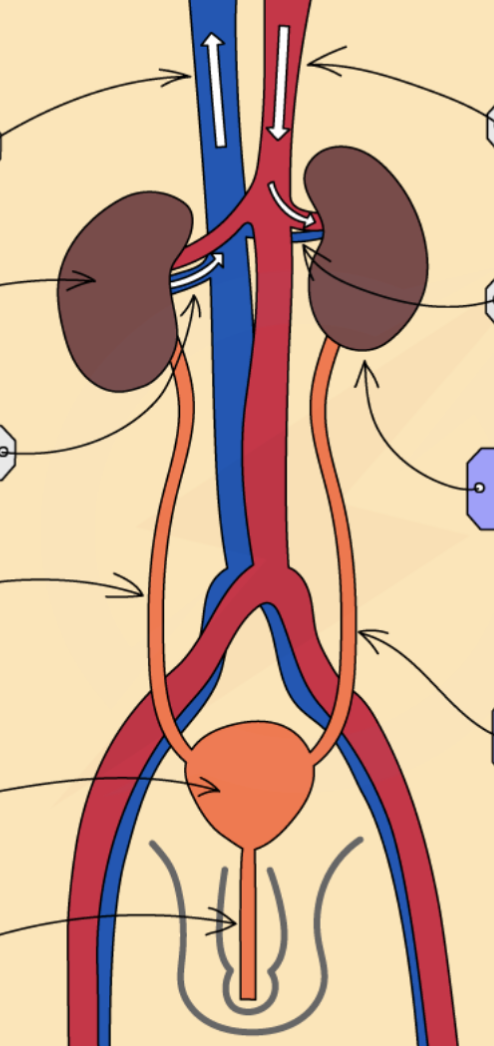
Identify the kidneys, ureters, bladder and urethra
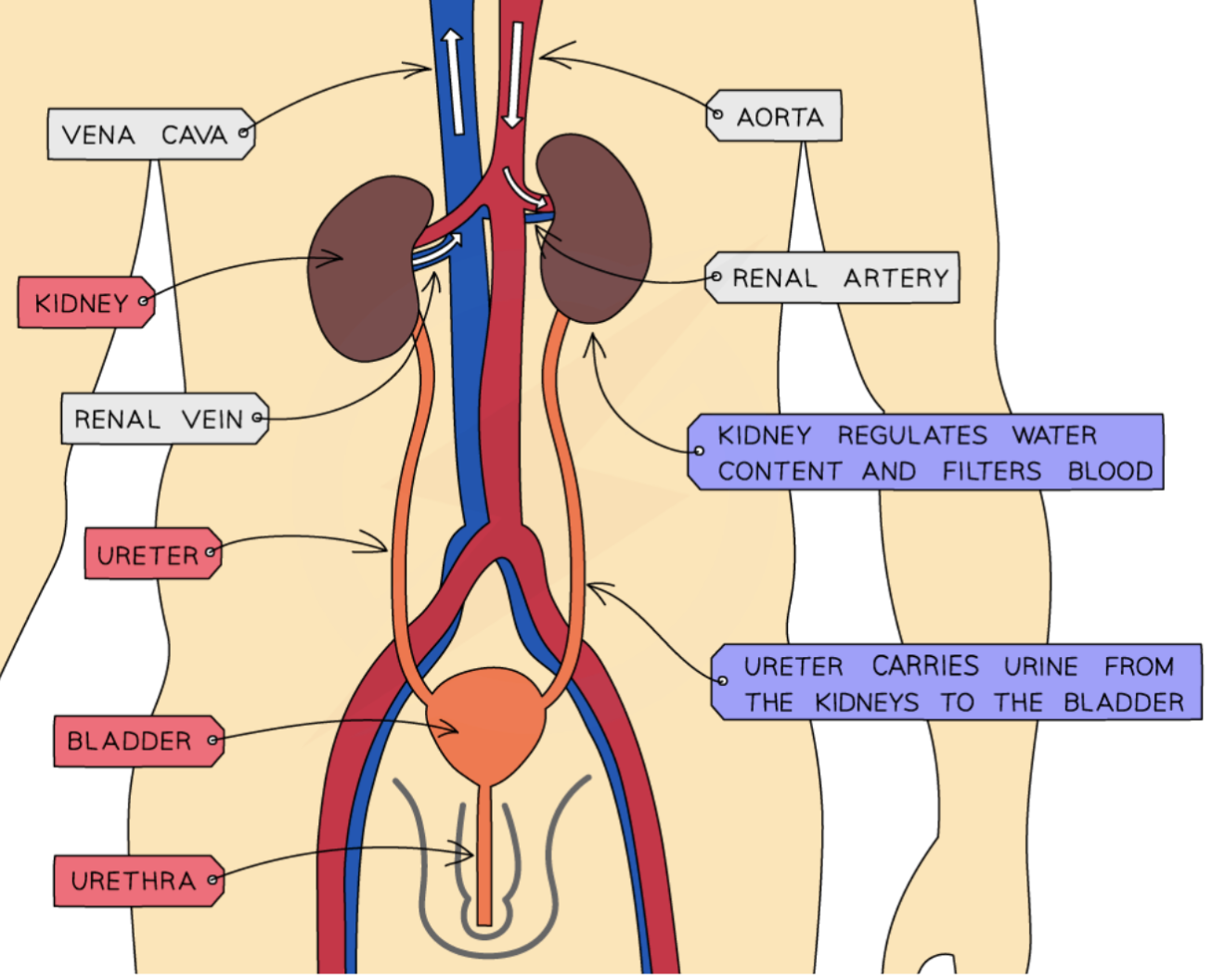
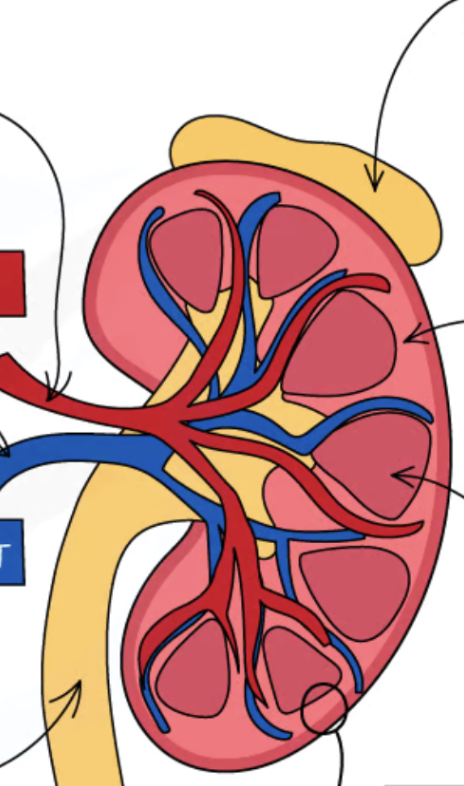
Identify the cortex and medulla
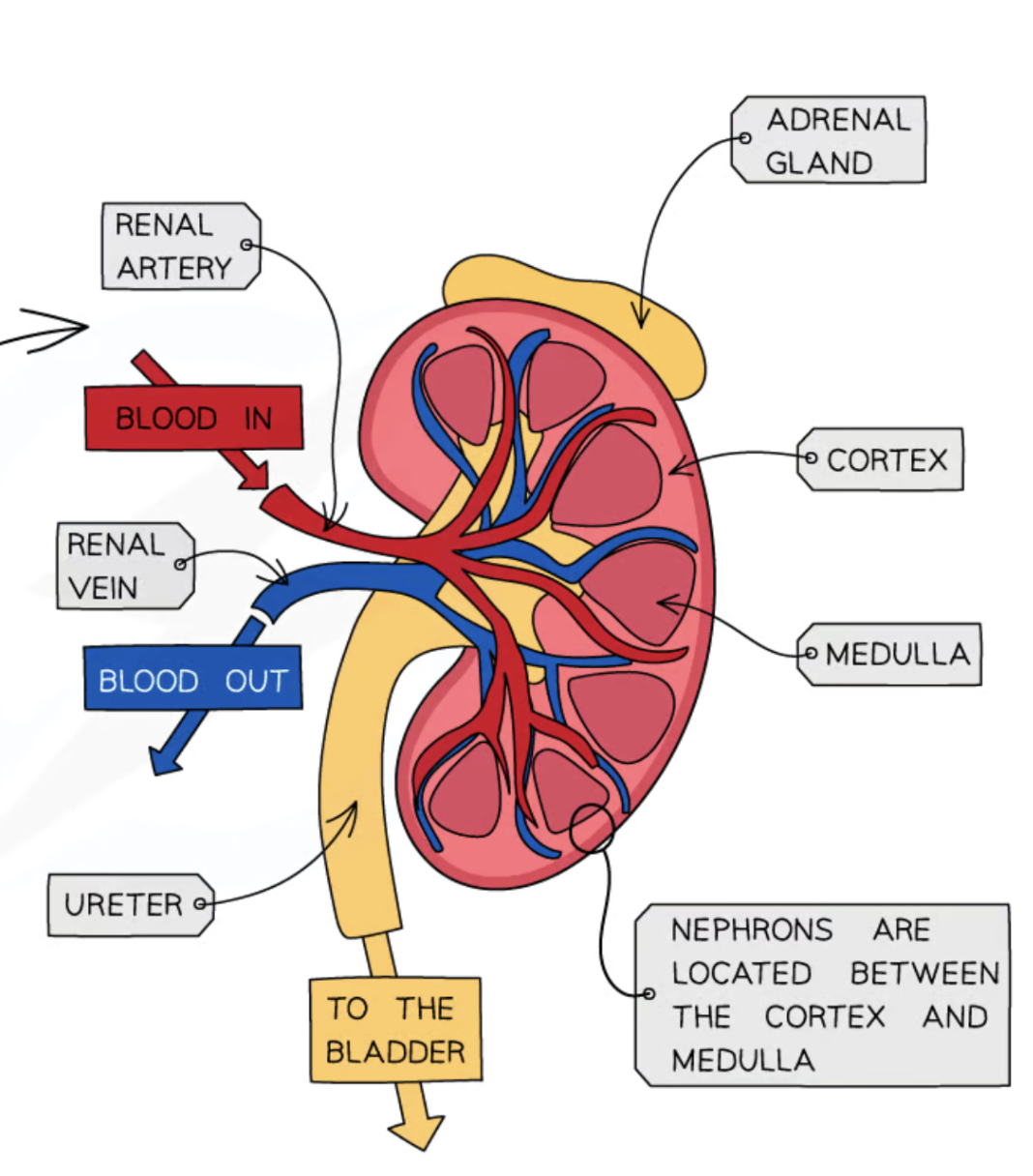
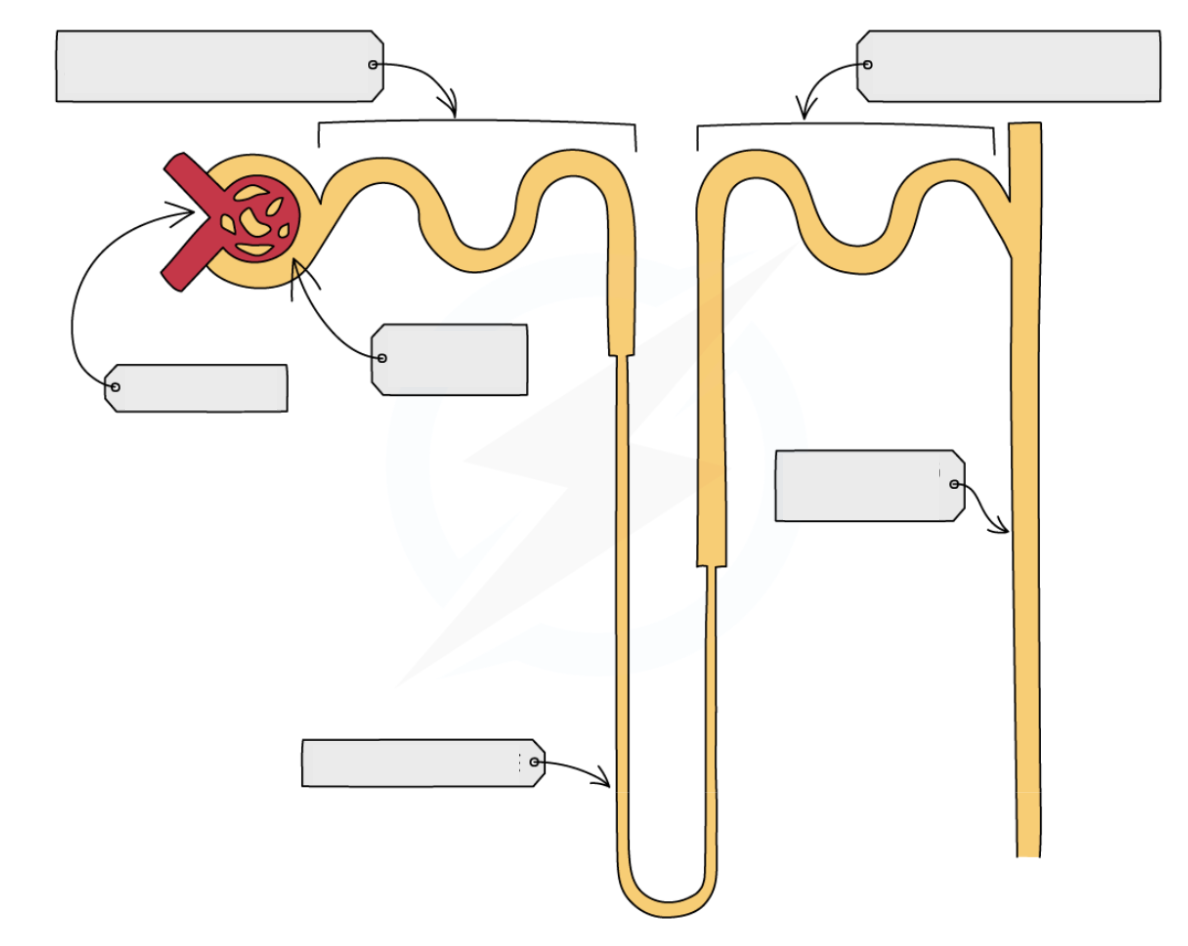
Structure and function of a nephron
Each kidney contains around a million tiny structures called nephrons, also known as kidney tubules or renal tubules
The nephrons start in the cortex of the kidney, loop down into the medulla and back up to the cortex
The contents of the nephrons drain into the innermost part of the kidney and the urine collects there before it flows into the ureter to be carried to the bladder for storage

Outline the role of the glomerulus in the filtration from the blood of water, glucose, urea and ions
Arterioles branch off the renal artery and lead to each nephron, where they form a knot of capillaries (the glomerulus) sitting inside the cup-shaped Bowman’s capsule
The capillaries get narrower as they get further into the glomerulus which increases the pressure on the blood moving through them (which is already at high pressure because it is coming directly from the renal artery which is connected to the aorta)
This eventually causes the smaller molecules being carried in the blood to be forced out of the capillaries and into the Bowman’s capsule, where they form what is known as the filtrate
The substances forced out of the capillaries are: glucose, water, urea, salts
Some of these are useful and will be reabsorbed back into the blood further down the nephron
outline the role of the nephron in the reabsorption of all of the glucose, some of the ions and most of the water back into the blood
After the glomerular filtrate enters the Bowman’s Capsule, glucose is the first substance to be reabsorbed at the proximal (first) convoluted tubule
This takes place by active transport
The nephron is adapted for this by having many mitochondria to provide energy for the active transport of glucose molecules
Reabsorption of glucose cannot take place anywhere else in the nephron as the gates that facilitate the active transport of glucose are only found in the proximal convoluted tubule
As the filtrate drips through the Loop of Henle necessary salts are reabsorbed back into the blood by diffusion and active transport
As salts are reabsorbed back into the blood, water follows by osmosis
Water is also reabsorbed from the collecting duct in different amounts depending on how much water the body needs at that time
People with diabetes cannot control their blood glucose levels and they are often very high, meaning that not all of the glucose filtered out can be reabsorbed into the blood in the proximal convoluted tubule
As there is nowhere else for the glucose to be reabsorbed, it continues in the filtrate and ends up in the urine
Outline the formation of urine containing urea, excess water and excess ions
The remaining fluid in the nephron mostly consists of excess water which was not filtered out or reabsorbed into the blood. It also consists of urea and excess ions. This forms urine.
Urea is toxic to the body at higher concentrations. Through excretion, urea is removed which prevents it from reaching toxic levels in the body.
The role of the liver in excretion
Amino acids are absorbed into the blood in the small intestine are carried to the liver for assimilation (when food molecules are converted to other molecules that the body needs)
During assimilation, required amino acids link together to make proteins e.g. fibrinogen, which are then released into blood.
Excess amino acids absorbed in the blood that are not needed to make proteins cannot be stored, so they are broken down in a process called deamination
Enzymes in the liver split up the amino acid molecules
The part of the molecule which contains carbon is turned into glycogen and stored
The other part, which contains nitrogen, is turned into ammonia, which is highly toxic, and so is immediately converted into urea, which is less toxic
The urea dissolves in the blood and is taken to the kidney to be excreted
A small amount is also excreted in sweat
Urea
urea is formed in the liver from
excess amino acids
deamination
the removal of the nitrogen-containing part of amino acids to form urea
importance of excretion
The toxic consequences of high urea levels, if it is not excreted effectively, are very serious:
Cell death
Reduced response to insulin, leading to diabetes
Deposits inside blood vessels